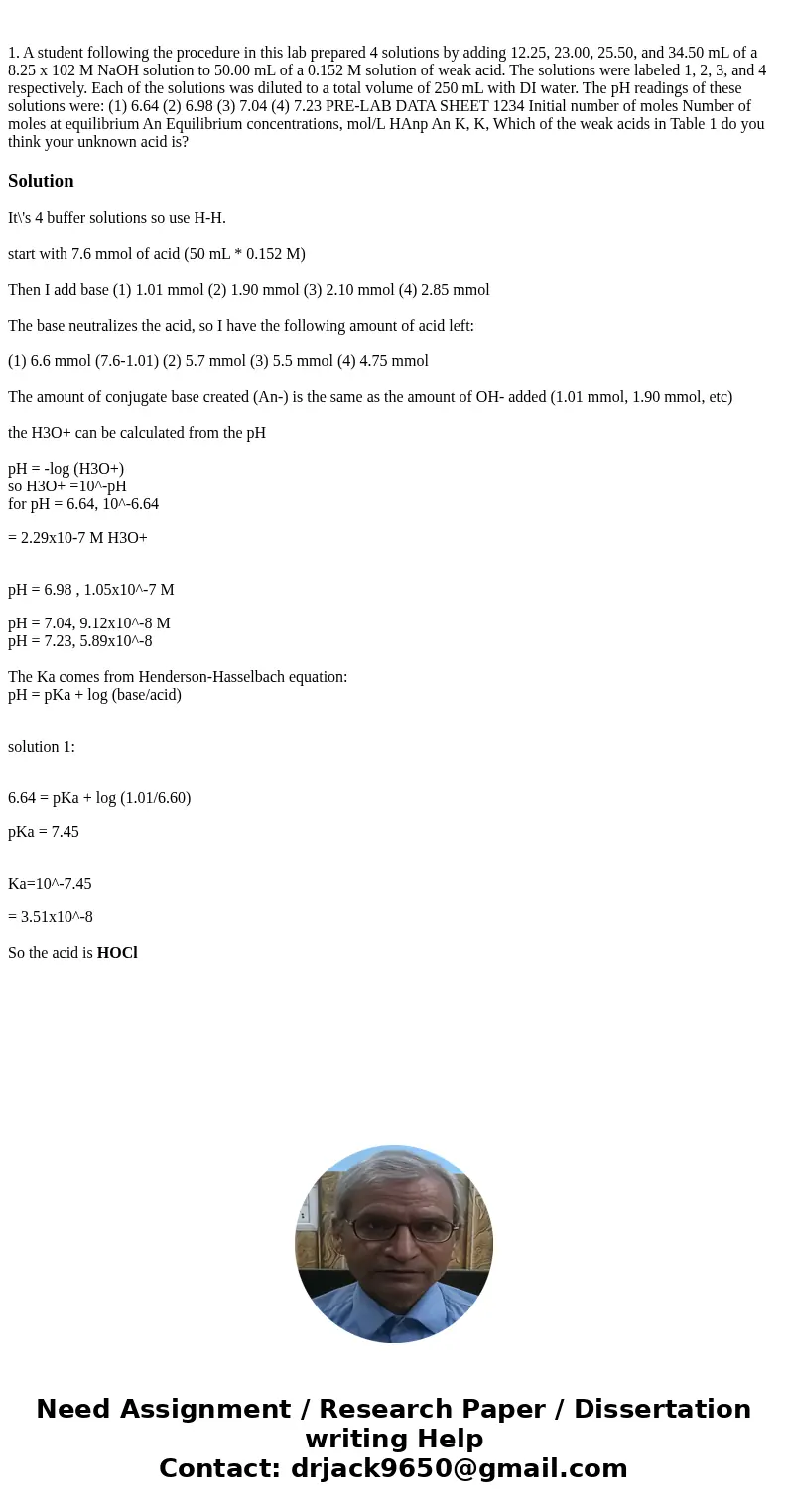1 A student following the procedure in this lab prepared 4 s
Solution
It\'s 4 buffer solutions so use H-H.
start with 7.6 mmol of acid (50 mL * 0.152 M)
Then I add base (1) 1.01 mmol (2) 1.90 mmol (3) 2.10 mmol (4) 2.85 mmol
The base neutralizes the acid, so I have the following amount of acid left:
(1) 6.6 mmol (7.6-1.01) (2) 5.7 mmol (3) 5.5 mmol (4) 4.75 mmol
The amount of conjugate base created (An-) is the same as the amount of OH- added (1.01 mmol, 1.90 mmol, etc)
the H3O+ can be calculated from the pH
pH = -log (H3O+)
so H3O+ =10^-pH
for pH = 6.64, 10^-6.64
= 2.29x10-7 M H3O+
pH = 6.98 , 1.05x10^-7 M
pH = 7.04, 9.12x10^-8 M
pH = 7.23, 5.89x10^-8
The Ka comes from Henderson-Hasselbach equation:
pH = pKa + log (base/acid)
solution 1:
6.64 = pKa + log (1.01/6.60)
pKa = 7.45
Ka=10^-7.45
= 3.51x10^-8
So the acid is HOCl

 Homework Sourse
Homework Sourse